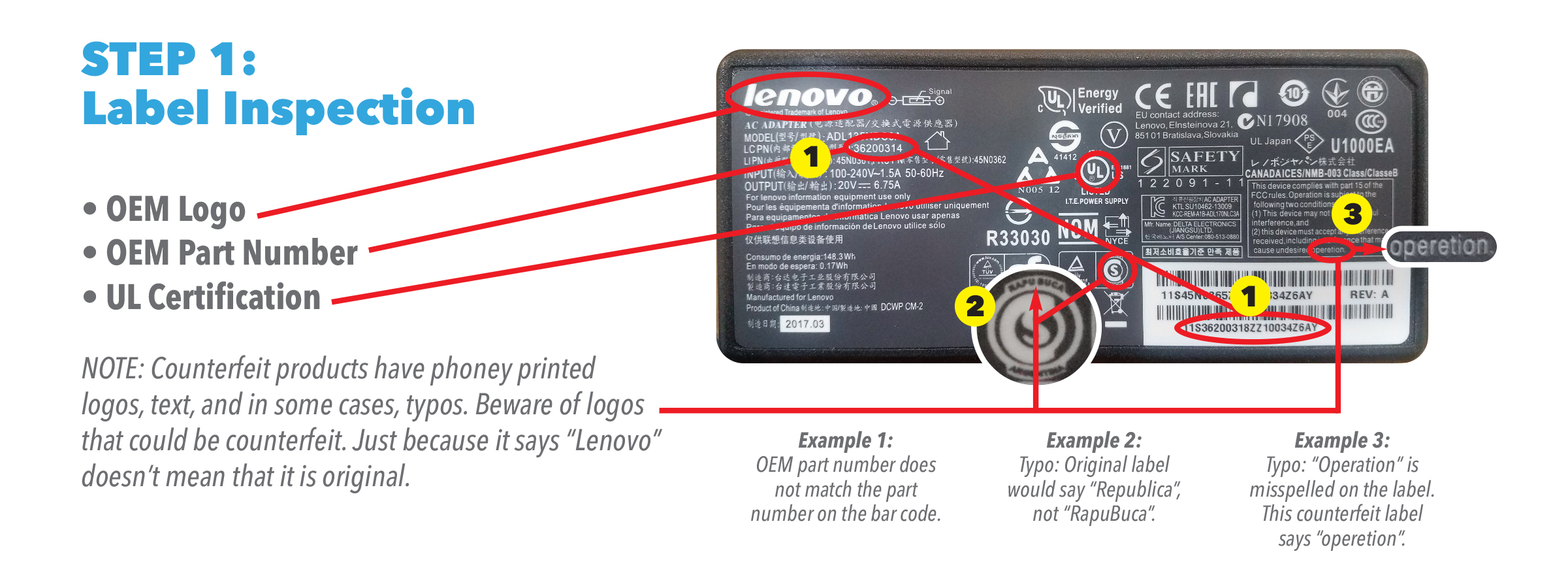With any educational technology program, AC adapters, aka power chargers, are crucial to sustain the daily functionality of your Chromebooks. AC adapters are a high-failure item, and therefore commonly replaced. It’s imperative when doing so to only purchase and use UL-certified AC adapters. While generic adapters may seem like a more budget-friendly option, they may cost more in the long run. More importantly, they could put your students and staff at risk. AGParts Education stocks 500,000 OEM new and recertified Chromebook parts, including authentic UL-certified AC adapters.
So, what exactly is a UL-certified adapter? Why is it so important to use only authentic UL-certified AC adapters? And, how can you spot a counterfeit adapter? Today, we’ll answer these important questions.
What is UL?
UL stands for Underwriter Laboratories. Founded in 1984 in Chicago, they are a third-party certification company that provides benchmarks and standards for products and processes in regard to safety, quality, security, and sustainability. Their mission is to make the world safer, smarter, more secure, and more sustainable.
UL holds manufacturers to higher standards during the manufacturing process, reducing risk and increasing safety. When a product bears the UL Mark, it means the product:
- Has completed and passed rigorous UL testing to ensure reliability, functionality, safety, sustainability, and overall quality
- Has been manufactured according to UL guidelines
- Meets operating standards set by the Original Design Manufacturer (ODM)
Non-UL-certified products may have been manufactured using substandard parts or under inconsistent manufacturing processes. This could lead to unpredictable output voltages, higher-than-normal operating temperatures, and overall lower quality and reliability for products. Overt time, this could lead to damage, failure, and possible fire hazards.
What is a UL-certified AC adapter?
A UL-certified AC adapter bears an authorized UL Mark. This means it has been evaluated and meets the appropriate Standard for Safety. These adapters comply with UL safety requirements for the US.
It’s important to understand that if an AC adapter bears a UL Mark, this does not mean that it is not a counterfeit or generic adapter.
Why is it so important to use a UL-certified AC adapter?
It’s simple: generic AC adapters are dangerous. We understand that electronic devices are expensive and generic accessories could seem like a good way to cut costs. But their risks far outweigh the money saved.
Counterfeit and generic AC adapters are often are made with substandard parts that fail to meet basic safety requirements. These faulty parts are a serious safety risk because they can overheat. Overheated parts can damage your equipment. More importantly, these sub-standard parts pose an immediate fire and burn risk and hazard.
Since generic parts are made with substandard parts, they also have a higher risk for failure. The money saved on buying a generic part quickly vanishes when your district has to replace the generic parts with authentic UL-certified adapters.
When you use a UL-certified AC adapter, you have the peace of mind knowing that this product has met stringent requirements for safety and quality.
Head-to-Head Testing: UL Certified Vs Generic
We internally tested generic adapters against the UL-certified adapters in our inventory. Here are our observations and results:
- Substandard parts which pose a risk for part and device failure, fire hazard: The generic adapters used substandard parts. One had a clip-type plug for the grounding wire, whereas a UL-certified adapter uses a solder joint. Another generic adapter had additional exposed wire not covered by an insulator.
- Above-average operating temperatures posting a potential fire hazard: Internal testing showed that some generic adapters ran 14% warmer than their UL-certified counterpart.
- Continuous voltage and current ratings outside of UL specifications: Internal testing showed output voltages registering less than the 5% variance acceptable under ODM standards.
While we could not verify the differences in the components, the results indicated that the clear difference between a reliable UL-certified adapter versus a substandard generic adapter.
How can you spot a counterfeit AC adapter?
If an AC adapter is branded and bears a UL Mark, this does not necessarily mean that it is a UL-certified AC adapter unfortunately. Most counterfeits will closely resemble an authentic UL-certified AC adapter.
To truly discern whether a product is fake it should not only be examined for label inconsistencies, but it should be tested by a trained technician. Below, we’ve outlined our process for authenticating AC adapters.
The first step is label inspection. There are several tell-tale signs on the label of an AC adapter to help you identify a counterfeit. These are easy indicators that you can spot yourself. The trick is to look for inconsistencies. Counterfeit products have phony printed logos, texts, and in some cases, typos. See photo below.

UL-Certified AC adapters should include:
- OEM logo
- Matching OEM part numbers
- UL Mark
- Clear text and no typos
If the label passes inspection, this still does not guarantee it is an authentic UL-certified AC adapter. That’s why further mechanical testing and inspection are required.
After label inspection, AGParts Education tests the AC adapters for power and current under load. Once the adapter passes, our technicians then perform an internal component inspection. We perform a spot check, opening a percentage of each shipment to verify:
- Industry-standard construction methods
- Authentic OEM identifiers
- Safety compliant materials
The best way to ensure that your school district has UL-certified AC adapters is to purchase from a supplier that sells authentic UL-certified AC adapters. At AGParts Education, the safety of your students and teachers are our number one priority. We only sell authentic UL-certified AC adapters.
For more information on how we can help with your district’s 1:1 Chromebook program, contact us today!
Originally published 7/14/2020. Updated on 8/25/2021, 3/30/2022.


Recent Comments